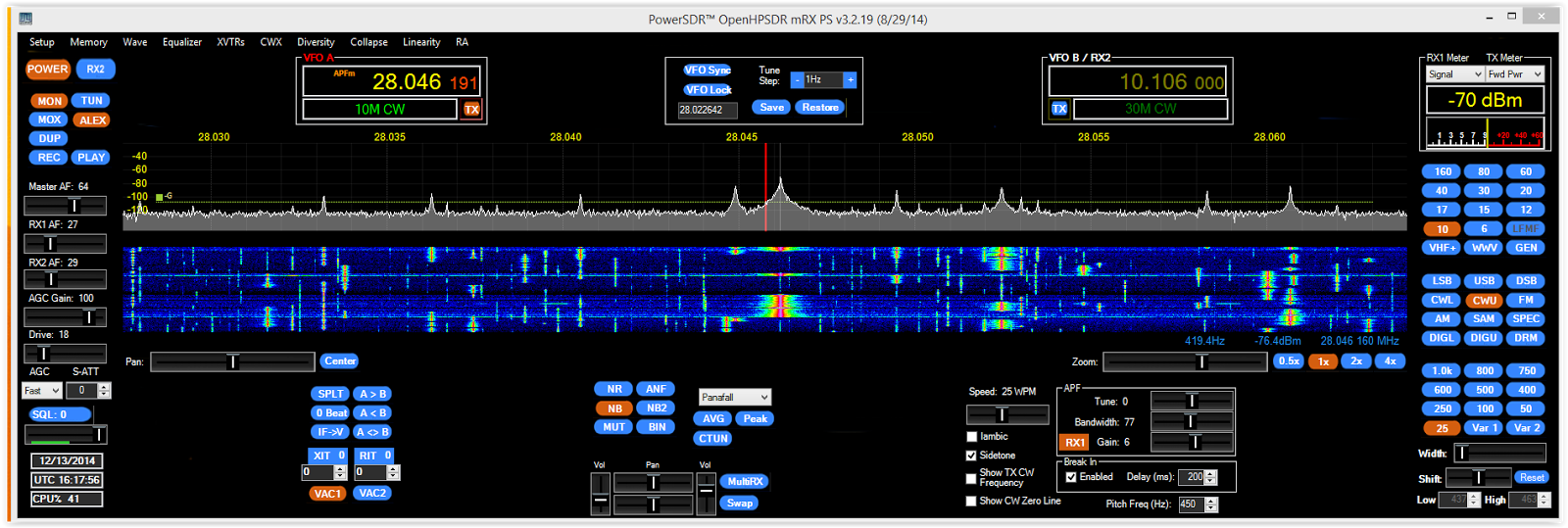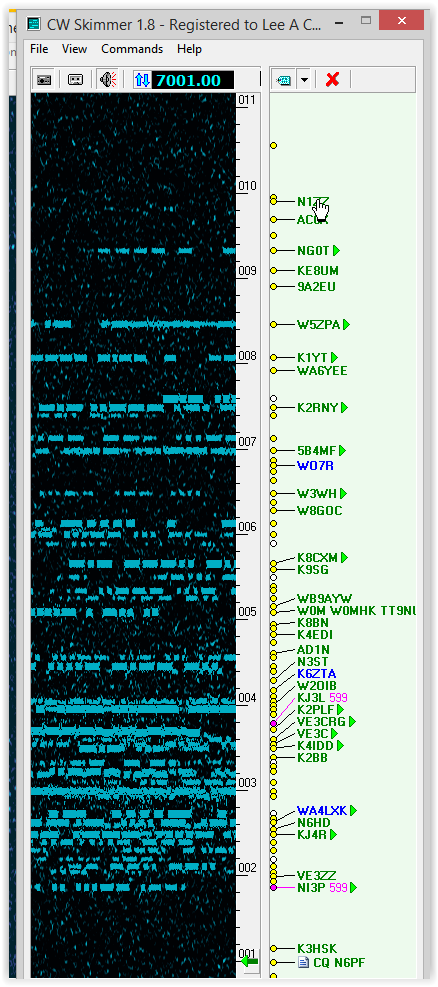Here is a shot of the 10M pattern of my 80M vertical. There is low medium and high angle radiation. I decided to try a vertical dipole cut for 10M which looks like this
Imagine the dotted vertical line is a tree and the dotted horizontal is a branch. Wire 3 angles back toward the tree and feed line 4 angles over to another tree to try and get as much seperation between the two as possible. I was able to get the dipole up to about 50ft in the tree using my lead sinker pneumatic canon. One shot was all it took. I love this thing for hanging antennas.
The pattern for the dipole is like this
It still has some low medium and high radiation but the reduction in gain is reversed so the max is a low angle takeoff. The 3D pattern looks like this
I did the analysis with and without the bent leg and feedline in the picture and the pattern skewing was minimal. It was dark by the time I had things hooked up and the temp had dropped to the 40's and I was using a flashlight to see what I was doing... aka perfect antenna hanging weather.
I fired up the rig and the band was of course dead but I did manage to work FY5KE in French Guiana with a big signal the night before the contest
I started working stations Sat and the band was pretty good but not outstanding. A was 21 and K was 3, SFI around 150
The station I'm listening to is Fred NP2X in the US VI. The guy has a monster signal and is a monster of a contest operator. I've known him since our college days at Univ of Ill.
The band noise was quiet about -137 dBm. I also set things up so I could A/B my 80M vert vs the 10M vert dipole at a button press. What I found was pretty much what the patterns predicted. On US stations the 80M antenna was a little louder. On medium hall into EU or to KH6 the antennas were pretty much equal and on long haul deep into Asiatic Russia the dipole was a little better.
I could only operate a few of the best contest hours but managed to work 44 new 10 M countries all over the world. I used every method I could think of to route out stations, spot collector which I set to spot only 10M spots
I used CW skimmer to skim sections of the band for new ones, and I also used the old tried and true method of starting at the bottom of the band and working to the top identifying every little blip on the panfall. I used write log to do the dupe-ing
I did not setup the writelog band scope.
As soon as the contest was over, I turned on all the bands in Spot Collector and saw S01WS in Western Sahara on 80M so I switched down there and worked him on the third call
To tell the truth I feel MUCH more at home digging the weak ones out of 80M static than up in nose bleed territory on 10M Good times!
73 W9OY
















































